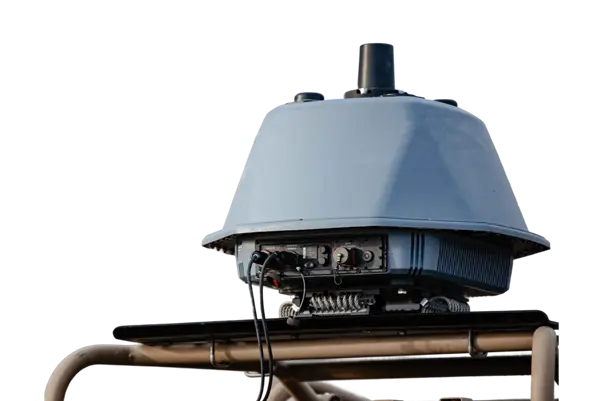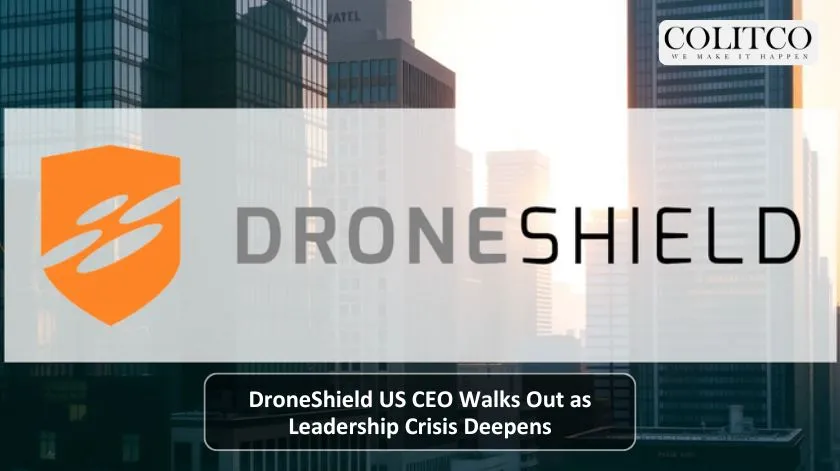DroneShield shares took another beating on Wednesday morning after the company announced Matt McCrann had quit his role as US Chief Executive with immediate effect.
The counter-drone specialist disclosed the resignation in a terse ASX statement that offered no explanation for the abrupt departure. McCrann joined DroneShield in 2019 and had been leading the company’s critical US operations since 2022.
The announcement sent shares tumbling as much as 13% to $2.25 in early trading. By midday, the stock remained down 8.16% at $2.25, extending a brutal month that has seen more than $1 billion wiped from the company’s market capitalisation.
Timing Couldn’t Be Worse
The resignation comes just days after DroneShield executives offloaded $67 million worth of shares in what analysts described as an “unprecedented” wave of insider selling.
CEO Oleg Vornik sold 14.8 million shares for $49.5 million. Chairman Peter James dumped stock worth $12.4 million. Director Jethro Marks cashed out $4.9 million.
That selling spree triggered a 31% single-day crash on 13 November – DroneShield’s worst trading session on record. The stock plunged from $3.28 to $2.45 in a matter of hours as institutional investors headed for the exits.
Now, with McCrann’s sudden departure, questions are mounting about what’s really happening inside the defence technology company.

Matt McCrann, Former CEO, DroneShield LLC
US Operations at a Critical Juncture
McCrann was overseeing DroneShield’s most ambitious expansion initiative just weeks before his resignation. The company had announced plans in September to double its US workforce and open a second Virginia facility.
More than 30% of the new roles were earmarked for AI and software development. The expansion aimed to position DroneShield closer to US Department of Defense procurement channels and accelerate product development cycles.
In a company statement from September, McCrann said: “As we continue to scale our operations globally, this expansion in the US plays a crucial role in enhancing our ability to innovate and deliver advanced solutions for the evolving defence industrial base right here in the US.”
That’s precisely the kind of momentum-building talk executives typically use when they’re planning to stick around. His abrupt exit raises serious questions about whether those expansion plans remain on track.
Bell Potter Calls It “Dead Money”
DroneShield’s house broker didn’t mince words in the wake of McCrann’s departure. Bell Potter’s institutional sales desk labelled the stock “dead money” for the rest of 2025.
Analyst Richard Coppleson told clients that institutional investors have completely backed away following the insider selling and leadership upheaval. He noted that retail investors are now the primary buyers, hoping for a second rally after the stock’s extraordinary run earlier in the year.
Bell Potter maintains a buy rating with a $5.30 price target – implying 120% upside from current levels. But the firm acknowledges the stock will likely trade sideways until the company rebuilds credibility through clean execution and fresh contract wins.
The Communications Disaster
The resignation caps off a disastrous fortnight for DroneShield’s corporate governance.
On 10 November, the company withdrew an ASX announcement about $7.6 million in new US Government contracts. Hours after the initial release, DroneShield admitted the contracts weren’t new at all – they were administrative reissues of existing orders.
The mistake triggered an ASX price query. DroneShield blamed an “administrative error” and promised to implement better controls. But the bungle, combined with the insider selling and now McCrann’s exit, has created what analysts describe as a governance and communications crisis.
Business Fundamentals Still Strong
Stepping back from the share price carnage, DroneShield’s operational performance tells a different story.
The company delivered record quarterly revenue of $92.9 million in Q3 2025 – an eye-watering 1,091% increase year-on-year. Cash receipts hit $77.4 million. Operating cashflow turned positive at $20.1 million.
Year-to-date committed revenues now sit at $193.1 million, already crushing the entire 2024 full-year result of $57 million. The company has secured major contracts across Europe, Latin America, and the United States. Its counter-drone systems are deployed with tier-one US Government agencies.
DroneShield CEO Oleg Vornik addressed McCrann’s departure in the resignation statement: “DroneShield thanks Matt for his contribution to the business and wishes Matt well for his next steps. Our US business includes talented, highly experienced personnel, with our counterdrone systems deployed with a number of tier-one US Government agencies.”
He added that the US represents a critical growth market for the company as drones continue to pose an increasing threat across military and civilian domains.
Stock Performance: From Hero to Zero
DroneShield shares remain up 226.7% year-to-date despite the recent carnage. But anyone who bought near the October peak of $6.60 is now nursing losses exceeding 60%.
The stock trades below its 200-day moving average – a technical indicator closely watched by institutional investors. Trading volumes have surged, with millions of shares changing hands daily as momentum traders exit positions.
As of 19 November 2025, DroneShield trades at $2.25 per share, giving it a market capitalisation of approximately $2.04 billion. The 52-week range stretches from $0.585 to $6.71, highlighting the extreme volatility that has characterised the stock’s performance.
Also Read: Historic Vote Forces DOJ Hand: What the Epstein Files Could Reveal
What Happens Next
DroneShield now faces three immediate challenges: appointing a credible US CEO replacement, rebuilding institutional confidence, and delivering on its ambitious expansion plans without the executive who was driving them.
The company has approximately 35 employees in the US out of a global workforce of 440. Finding someone with the right mix of defence sector experience, technical credibility, and relationship management skills won’t happen overnight.
Meanwhile, the counter-drone market continues to expand rapidly. Industry forecasts project the sector will grow from $2.16 billion in 2024 to $7.05 billion by 2029, representing a compound annual growth rate of 26.7%.
DroneShield’s technology remains battle-tested and highly regarded. Its AI-powered systems combine radio frequency sensing, electronic warfare, and machine learning to detect and defeat hostile drones. The company serves military, government, and critical infrastructure clients in more than 70 countries.

The question now is whether DroneShield’s board can steady the ship and restore the market’s confidence in management. With the US market representing a crucial growth opportunity and institutional investors sitting on the sidelines, the company needs to demonstrate it can execute without the drama.
For investors considering DroneShield, the next few weeks will be critical. Fresh contract wins, a strong US CEO appointment, and clean communication could spark a recovery. But without those catalysts, Bell Potter’s “dead money” call may prove accurate through year-end.
The defence sector isn’t waiting. Competitors like Raytheon, Lockheed Martin, and Israel Aerospace Industries are all vying for the same procurement dollars. DroneShield built its competitive edge on speed, innovation, and modular solutions. Losing that momentum now could prove costly.












